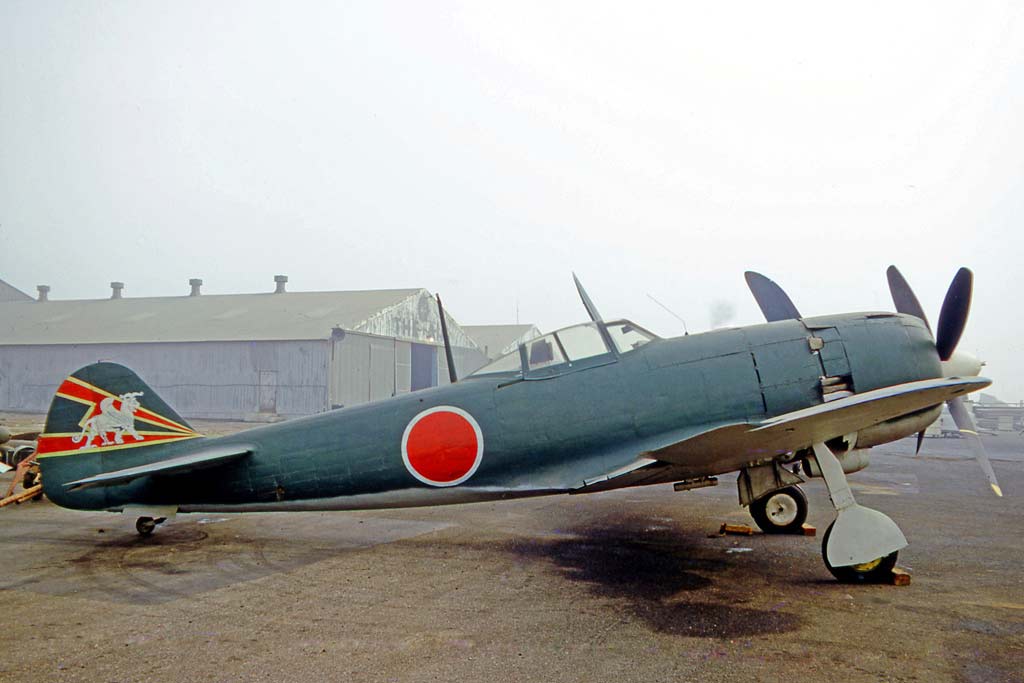The Nakajima Ki-84 Hayate, a highly capable Japanese WWII fighter, was known for its speed, agility, and powerful armament.
The Nakajima Ki-84 Hayate was one of the most advanced fighters in the Japanese Imperial Army Air Service during World War II. This article aims to provide a comprehensive overview of the Ki-84’s development, design, performance, and combat history, underscoring its role in the Pacific theater.
History of the Development of the Nakajima Ki-84:
In the midst of World War II, Japan urgently needed a high-performance fighter aircraft to counter the increasingly advanced Allied planes. The Nakajima Ki-84 Hayate was developed by Nakajima Aircraft Company to meet this need. The project, led by chief designer T. Koyama, aimed to create a fighter that could dominate in terms of speed, agility, and firepower.
The development of the Ki-84 was a strategic response to the challenges faced by Japanese forces, particularly against the United States’ improved fighter aircraft. The Ki-84, which first flew in 1943, was designed to be superior to its predecessors, combining exceptional performance with heavy armament.
Design of the Nakajima Ki-84:
The Ki-84 Hayate boasted a cutting-edge design for its time. It had a length of 9.9 meters (32.5 feet) and a wingspan of 11.2 meters (36.7 feet). The aircraft’s airframe was mainly constructed from light alloys and featured a streamlined, aerodynamically efficient profile.
Powered by a Nakajima Ha-45 engine, the Ki-84 was designed for high speed and agility. It was armed with two 20mm and two 30mm cannons, making it one of the most heavily armed Japanese fighters of the war.
The design of the Ki-84 offered several advantages, including excellent maneuverability, high speed, and formidable firepower. However, it faced challenges in production due to Japan’s dwindling resources, and the quality of later models suffered as a result.

Performance of the Nakajima Ki-84:
The Ki-84’s Nakajima Ha-45 engine, producing around 1,990 horsepower, enabled a top speed of about 624 km/h (387 mph) and a service ceiling of 11,400 meters (37,400 feet). Its operational range was approximately 2,200 kilometers (1,367 miles), enhanced by drop tanks.
In comparison to contemporaries like the American P-51 Mustang and the British Spitfire, the Ki-84 was competitive in speed and agility, though it fell short in terms of high-altitude performance and range.
Military Use and Combat of the Nakajima Ki-84:
The Ki-84’s heavy armament made it effective in both air-to-air combat and ground attack roles. It was used extensively in the later stages of the Pacific War, where its performance was highly regarded by both Japanese and Allied pilots.
The Ki-84 engaged in various significant battles, including the defense of the Japanese mainland. Despite facing more advanced Allied aircraft, the Ki-84 proved to be a formidable opponent due to its speed, maneuverability, and firepower.
The Ki-84 was not exported to other countries during the war and saw limited use post-WWII. It was eventually phased out and replaced by more advanced jet aircraft.
The Nakajima Ki-84 Hayate was a pinnacle of Japanese fighter design during World War II, representing a significant leap forward in terms of performance and capabilities. Its development was driven by the imperative of air superiority, and in combat, the Ki-84 demonstrated remarkable effectiveness. Although its impact was limited by production challenges and the late stage of its introduction, the Ki-84 remains a noteworthy aircraft in WWII aviation history, symbolizing Japan’s advanced aeronautical engineering capabilities during the war.
Back to the Warbirds section.